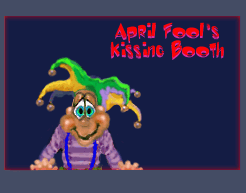I’m glad that you enjoyed the pics from our trip! Eeyore had a wonderful time! ![]() As did Jason and I.
As did Jason and I.
Hopefully, if Jason actually takes care of the reservation (I’m the one who usually does that), we will be going here for my birthday.


This…is the Royal Gorge Bridge. It is the world’s highest suspension bridge floating 1053 feet above the Arkansas River!! Awesome eh? Yup…I’m loving this! I think that Jason will be terrified, given that he has a slight fear of heights, but he said that he would be willing to go there with me. Now that’s love folks!! 
This park has some incredible features! They have an aerial tram that takes you across the gorge suspended from a huge cable. 


They also have a new feature, the skycoaster!! This ride allows you to freefall (you’re hooked to a cable) at 50mph over 1200 feet above the gorge!! Woohoo!!  I don’t think that Jason will go on this with me.
I don’t think that Jason will go on this with me. 



AND…they have the really cool incline railroad ride!! It takes you on the world’s steepest incline (railroad wise) 1500 feet down the side of the gorge plunging you toward the raging river below only to stop just feet from the water!! 


Yup…I can’t think of a better way to celebrate my 30th birthday than to be plunged 1500 feet toward a raging river at 50mph can you? 
Other than that…it’s snowing here AGAIN today. ![]() I don’t mind the moisture…I just wish it would come in the form of rain instead of the frozen kind. I mean…it IS April after all.
I don’t mind the moisture…I just wish it would come in the form of rain instead of the frozen kind. I mean…it IS April after all.
Jason and I are attending his Initiation Ceremony at MSU tonight. I have to get dressed up for this…which means, I may have to wear (dramatic music)  a skirt!!!
a skirt!!! ![]() I know…I’m just as shocked as you are!! It’s just not my style…but I’m willing to make this sacrifice for the man I love.
I know…I’m just as shocked as you are!! It’s just not my style…but I’m willing to make this sacrifice for the man I love.  I just hope that I don’t freeze waiting for the train for downtown.
I just hope that I don’t freeze waiting for the train for downtown.
Well…I need to get back to work. So…here is my post on Autism for today and it will probably be my last for the month. Have a great weekend! 
Living With Autism
Overview
The demands of raising a child with autism are great, and families frequently experience high levels of stress. Recognizing and preparing yourself for the challenges that are in store will make a tremendous difference to all involved, including the parents, siblings, grandparents, extended family, and friends.
The uniqueness of each individual with autism makes the experience of raising a child with autism different for each family. But there are some consistent themes or issues that most families will want to be aware to be able to provide the best support to the individual and to family members.
The ASA has developed in-depth information on a variety of topics related to living with autism. The information below is by no means exhaustive, but it should help to equip families with some of the basic tools they may need to successfully raise a child with autism.
For more information regarding Autism, visit these sites:
~~~~~~~~~~~~~~~~~~~~~~~~~~~~~~~~~~~~~~~~~~~~~~~~~~~~~~~~~~~~~~~




















































































Recent Comments